
Figure 1

Figure 2
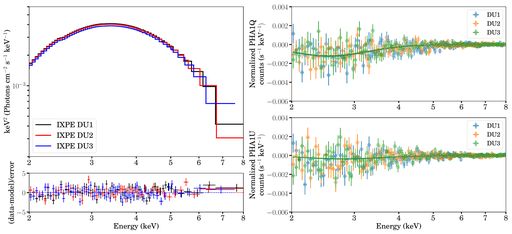
Figure 3

Figure 4
Vacuum birefringence in the polarized X-ray emission of a radio magnetar. Rachael E. Stewart et. al. https://arxiv.org/abs/2509.19446
25.09.2025 03:15 — 👍 2 🔁 1 💬 0 📌 0
There are handheld calculators that can run Python now.
29.08.2025 19:40 — 👍 0 🔁 0 💬 1 📌 0

I’m an award-winning mathematician. Trump just cut my funding.
The “Mozart of Math” tried to stay out of politics. Then it came for his research.
I wrote an op-ed on the world-class STEM research ecosystem in the United States, and how this ecosystem is now under attack on multiple fronts by the current administration: newsletter.ofthebrave.org/p/im-an-awar...
18.08.2025 15:45 — 👍 754 🔁 307 💬 17 📌 30
The question you must ask yourself is does it need to be on the moon and is it a cost effective way to do the science?
18.08.2025 13:50 — 👍 0 🔁 0 💬 0 📌 0
now?
03.08.2025 02:50 — 👍 1 🔁 0 💬 0 📌 0

NSF and NIH suspend grants to UCLA
Move follows Trump administration finding that school didn’t effectively combat antisemitism
The Trump administration is launching a new wave of attacks on universities, and UCLA is the latest target.
My reporting on how the university has been hit and how some of its scientists are responding:
www.science.org/content/arti...
01.08.2025 18:11 — 👍 48 🔁 36 💬 1 📌 8
🤦♂️
01.08.2025 14:59 — 👍 0 🔁 0 💬 0 📌 0
Tank you!
25.07.2025 21:41 — 👍 4 🔁 1 💬 1 📌 0
YouTube video by AAS
AAS Journal Author Series: Kaustubh Rajwade on 2025ApJ...985L...3R
youtu.be/BLjJgZP4SkU
🔭
AAS Journal Author Series: Kaustubh Rajwade on 2025ApJ...985L...3R
Kaustubh Rajwade (University of Oxford) chats about his article on a radio burst from a neutron star in the Carina Nebula.
21.07.2025 20:59 — 👍 3 🔁 1 💬 0 📌 0
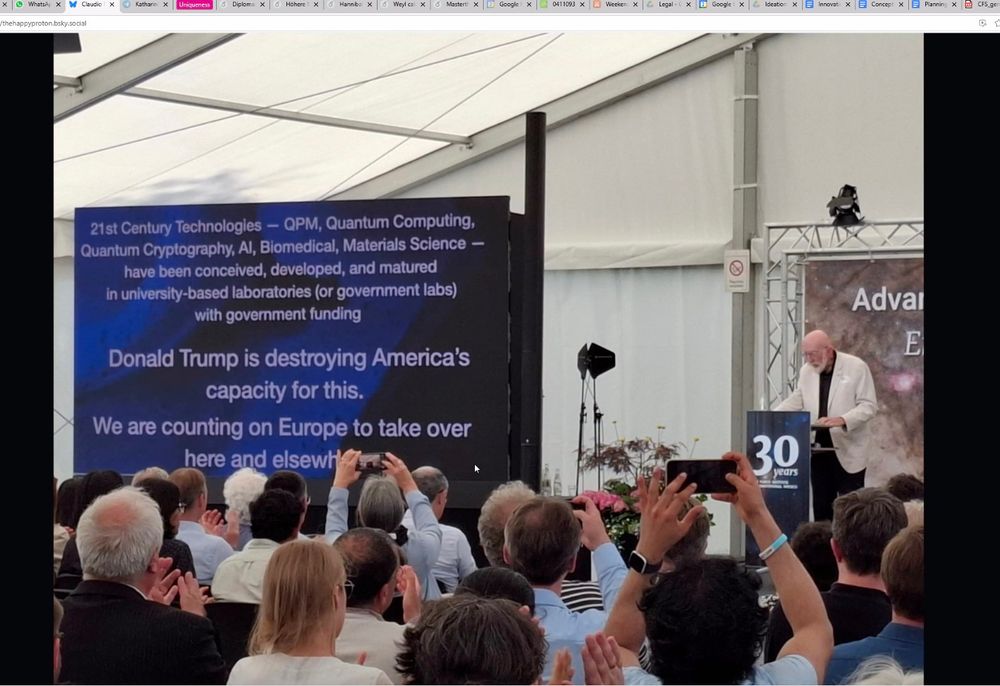
Nobel Prize Laureate Kip Thorne speaking yesterday at the Albert Einstein Institute in Postdam, Germany:
"Donald Trump is destroying America's capacity for [leading science]. We are counting on Europe to take over here and elsewhere." ⚛️ 🧪
04.06.2025 21:03 — 👍 259 🔁 100 💬 4 📌 9
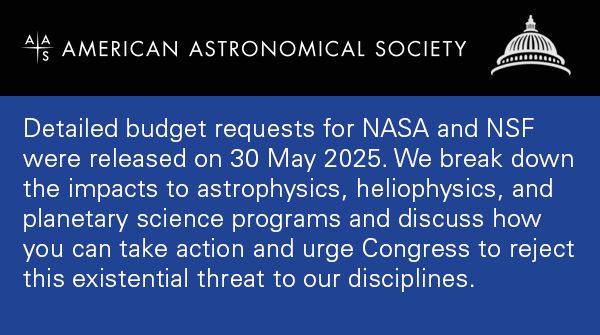
Last week, NASA and NSF released their FY26 budget requests. We list the detailed impacts on the astronomical sciences in this blog post, and share how you can take action today.
aas.org/posts/news/2...
@policy.aas.org
06.06.2025 12:49 — 👍 59 🔁 37 💬 1 📌 4

Plot showing two tiles vertically stacked. Top tile shows the signal from this object as observed in radio. It presents as two narrow peaks. The bottom tile represents the signal in x-rays, and presents as more broader peaks that have extended features. The peaks for both radio and x-rays occur at the same phase
What makes ASKAP J1832-0911 stand out from the rest of the Long-Period Transients is that, for the first time, coincident X-ray emission, along with radio emissions, have also been detected from such an object, thanks to the Chandra X-ray Observatory.
📸 Ziteng (Andy) Wang / @icrar.bsky.social
28.05.2025 15:01 — 👍 11 🔁 2 💬 0 📌 2
imagine how much ink and paint has been saved over the decades by the clearly superior version
03.05.2025 18:37 — 👍 0 🔁 0 💬 0 📌 0

Looking up at the Capitol rotunda against a blue sky. An American flag in front of the rotunda is blowing in the wind.
The president's budget proposal cuts billions in funding from the DOE Office of Science, NIST, NASA, and the NSF — but there’s still time to change it. Tell your lawmakers why they should stand up for science using our letter-writing toolkit, targeted to your state: go.aps.org/3RP9EWF
02.05.2025 21:32 — 👍 37 🔁 20 💬 1 📌 2
The American Astronomical Society is gravely concerned by the deep cuts to NASA science funding reported to be in the draft President’s Budget Request for Fiscal Year 2026. Read more here: aas.org/press/aas-st... and take action now: aas.org/urge-nasa-su...
11.04.2025 20:04 — 👍 264 🔁 141 💬 4 📌 9

Inside Trump and Musk’s Takeover of NASA
So far, NASA has been spared the sweeping cuts that DOGE has unleashed on other federal agencies. Is that about to change?
It’s unclear whether Elon Musk’s enthusiasm for space exploration, and his influence with President Trump, could help shield NASA from sweeping cuts—or encourage Musk to remake it in his image.
21.03.2025 17:01 — 👍 63 🔁 19 💬 8 📌 1
new preprint! 🥳
14.03.2025 22:41 — 👍 1 🔁 0 💬 0 📌 0
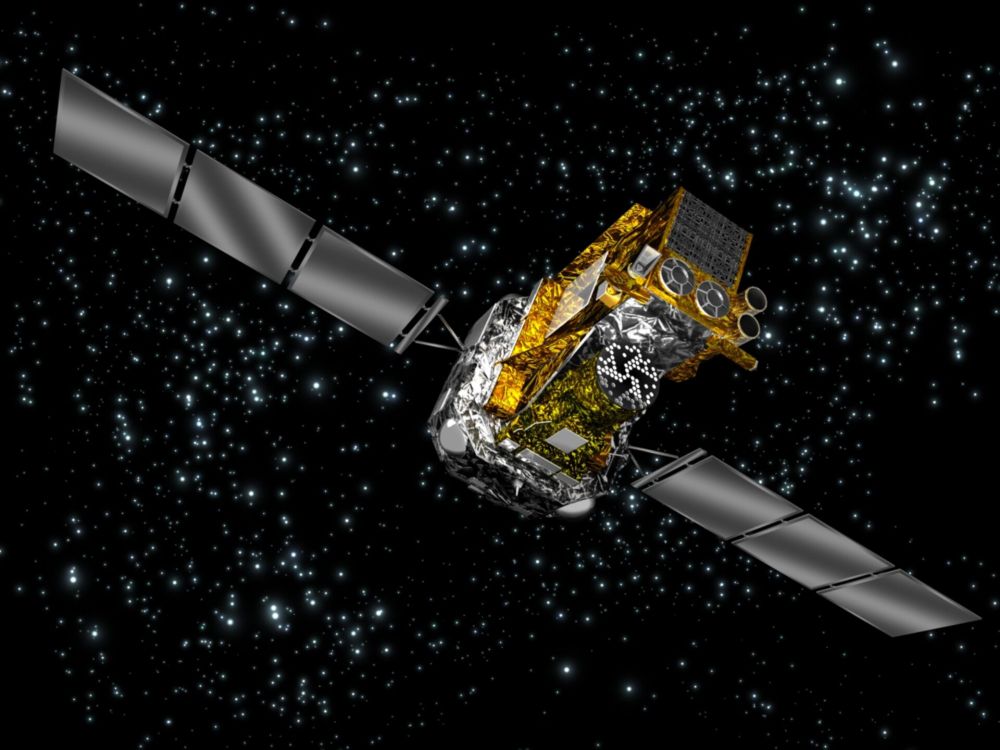
Mission accomplished for Integral, ESA’s gamma-ray telescope
Mission accomplished for #Integral 🕹️🛰️✅
After 2886 orbits & 22 years in space, our gamma-ray telescope ends its observations 👉 www.esa.int/Science_Expl...
Integral uncovered the nature of gamma-ray bursts & the origin of gravitational wave events, among others 💥✨ 1/3
🔭🧪 #highenergyastro
28.02.2025 09:06 — 👍 264 🔁 61 💬 6 📌 15

Observation of a Rapidly Pulsating Radio Source
by
A. HEWISH
S. J. BELL
J. D. H. PILKINGTON
P. F. SCOTT
R. A. COLLINS
Mullard Radio Astronomy Observatory, Cavendish Laboratory, University of Cambridge
Unusual signals from pulsating radio sources have been recorded at the Mullard Radio Astronomy Observatory. The radiation seems to
come from local objects within the gala‹y, and may be associated with oscillations of white dwarf or neutron stars.
In July 1967, a large radio telescope operating at a frequency of 81-5 MHz was brought into use at the Mullard Radio Astronomy Observatory. This instrument was designed to investigate the angular structure of compact radio sources by observing the scintillation caused by the irregular structure of the interplanetary medium'.
The initial survey includes the whole sky in the declination range - 08° < 8<44° and this area is scanned once a week. A large fraction of the sky is thus under regular surveillance. Soon after the instrument was brought into operation it was noticed that signals which appeared at first to be weak sporadic interference were repeatedly observed at a fixed declination and right ascension; this result showed that the source could not be terrestrial in origin.
Jocelyn Bell and Anthony Hewish announced their discovery of a “rapidly pulsating radio source” — what we now refer to as a pulsar — with a paper in @nature.com #OTD in 1968. 🧪 🔭 ⚛️
www.nature.com/articles/217...
24.02.2025 20:28 — 👍 59 🔁 11 💬 3 📌 1
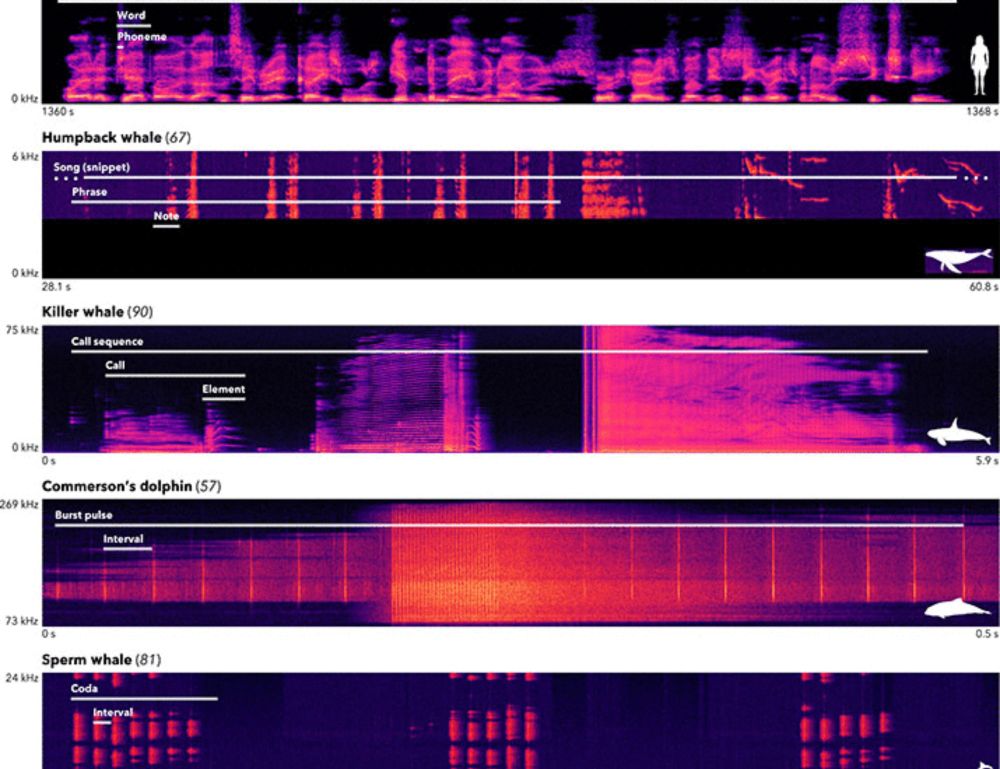
Language-like efficiency in whale communication
Whale vocalizations follow efficiency rules seen in human language, revealing striking similarities in communication systems.
Do whales optimize their vocalizations for efficiency, just like human language? 🐋🎶 My latest study in
Science Advances (@science.org) suggests they do—following linguistic laws seen in human speech. 🧵 www.science.org/doi/10.1126/...
05.02.2025 19:13 — 👍 203 🔁 66 💬 5 📌 3
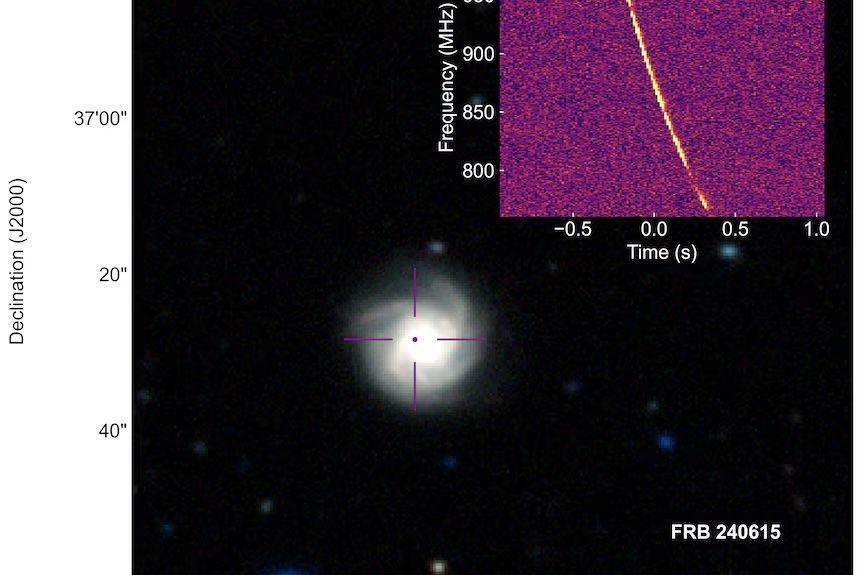
An example of a galaxy hosting a fast radio burst identified by the CRACO system using the ASKAP radio telescope.
The central image shows a galaxy (white on a black background).
The inset plot shows the signal from a fast radio burst named FRB 240615.
Image credit: Yuanming Wang, the CRAFT Collaboration.
A new result led by my former student Ziteng (Andy) Wang and colleagues:
"20 mysterious radio bursts" found using our new Commensal Realtime ASKAP Fast Transient COherent (CRACO) system.
www.abc.net.au/news/2025-01...
(With commentary by @astrolaura.com)
#RadioAstronomy
28.01.2025 04:13 — 👍 19 🔁 5 💬 1 📌 0
🥳❤️
20.01.2025 20:47 — 👍 0 🔁 0 💬 0 📌 0
Bend was awesome in the 90s, but now it's overcrowded
20.01.2025 00:43 — 👍 0 🔁 0 💬 1 📌 0
🙌
15.01.2025 17:19 — 👍 1 🔁 0 💬 0 📌 0
Astronomer @Caltech.edu, studying binary stars and black holes
Planetary Astrobiologist and Director of the
@PlanetaryHabLab. http://astrodon.social/@profabelmendez #exoplanets #astrobiology #habitability
she/her. (Exo)planetary clouds/hazes. Sagan Fellow at NASA GSFC/STScI --> Asst. Prof of Astro at UMD starting Fall 2026.
Opinions all me and only me.
Still screaming inside my heart.
https://tx.ag/moran
https://www.twitch.tv/shaun_vids
https://www.youtube.com/@Shaun_vids
https://www.patreon.com/shaunfromyoutube
A peer-reviewed Diamond Open-Access Astrophysics journal using an arXiv overlay. This community-run service is provided entirely free for authors and readers.
https://astro.theoj.org/
SpacePolicyOnline.com is your first stop for news, information and analysis about civil, commercial, and national security space programs. Marcia Smith is the editor.
NASAWATCH.com - Unofficial Space News Since 1996
Founded the Talking Space Podcast in 2009.
Immersed in spaceflight since the Apollo days, Space Advocate and lovebird Dad. All Opinions are mine alone and don't reflect the position of the podcast. https://www.talkingspaceonline.com
Looker-atter of things, listener of stuff. Knower of the unknown.
Mathematician at UCLA. My primary social media account is https://mathstodon.xyz/@tao . I also have a blog at https://terrytao.wordpress.com/ and a home page at https://www.math.ucla.edu/~tao/
Professor of astrophysics / planetary science / meteoritics at Arizona State University.
Extragalactic observer (black holes, galaxies, galaxy clusters, stellar pops) that also dabbles in planetary astronomy. Really, basically a pixel pusher.
science journalist | good physics, bad physics, and sometimes ugly physics
Signal: dgaristo.72
Email: digaristo@gmail.com
NYT columnist. Signal: carlzimmer.51
Newsletter: https://buttondown.com/carlzimmer/
Web: http://carlzimmer.com
[This account includes a tweet archive]
Professor at Case Western Reserve University. Astronomer working on galaxies, cosmology, dark matter and modified gravity.
Read about them at https://tritonstation.com/
Planetary scientist, equestrian, and cat herder. Cat posts at: https://bsky.app/profile/katskitties.bsky.social
Professor of Astronomy and Astrophysics at Penn State.
Son, father, partner, scientist, teacher, student, human, Earthling.
Mostly posting astronomy. Mostly.
astronomy writer (de volkskrant, sky & telescope, sky at night magazine) ★ book author (more than 90 titles) ★ asteroid 10986 ★ amersfoort, the netherlands ★ eclipse chaser ★ atlas lover ★ partner, father, grandfather ★ www.allesoversterrenkunde.nl






















